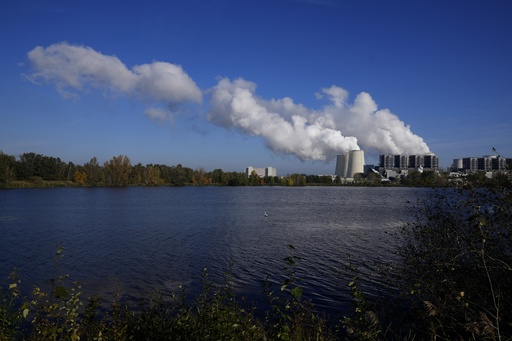
The extent of methane emissions arising from oil and gas operations, coal mines, and landfills around the globe remains largely undocumented, with current data only providing a glimpse into the issue. According to Stephane Germain, the CEO of GHGSat, a company that employs satellites to monitor methane emissions, the situation appears to be deteriorating. He noted, “The past year, we’ve detected more emissions than ever before.”
Since late 2023, GHGSat has identified approximately 20,000 locations across the world classified as super-emitters—sites that are releasing methane at a staggering rate of 100 kilograms (220 pounds) per hour. This figure represents a significant rise from the prior year’s detection of around 15,000 super-emitting sites. Germain emphasized that these statistics were rounded off to facilitate discussions about emissions in the wake of countries’ commitments to tackle methane at the COP28 global climate conference in Dubai, with COP29 set to commence soon in Baku, Azerbaijan.
In a collective move, last year, fifty oil companies, responsible for nearly half of the globe’s production, vowed to drastically reduce methane emissions and cease the routine flaring of gas during their operations by 2030. In numerous regions, methane, or natural gas, is often flared instead of being captured for utilization in electricity generation or cooking due to a primary focus on extracting oil. Germain indicated that oil and gas operations contribute to almost half of the detected methane emissions, with waste management accounting for approximately one-third and mining activities responsible for 16%.
While GHGSat enhanced its fleet by adding three satellites during the past year, Germain expressed skepticism that this expansion was the primary reason for increased emission detections. He suggested that the urgent energy needs in developing countries, which still primarily rely on fossil fuels, play a larger role. He noted that North America and Eurasia are leading contributors to methane emissions, with landfills in Canada being the predominant source.
Earlier this year, research indicated that American oil and natural gas infrastructures, including wells, pipelines, and compressors, are releasing methane at rates three times higher than government estimates suggest. A September study corroborated that atmospheric methane levels are rising, exacerbating the climate crisis alongside carbon dioxide and other greenhouse gases. Although carbon dioxide remains the most significant pollutant due to its longer atmospheric lifespan, methane’s potency makes it particularly concerning in terms of immediate climate impact.
GHGSat, located in Montreal, is part of a growing cohort of both profit-driven and philanthropic nonprofit organizations working to monitor and analyze methane emissions from space. This group includes entities like Carbon Mapper, Kayrros, and MethaneSAT, all of which collaborate and compete to shed light on this pressing global challenge.
